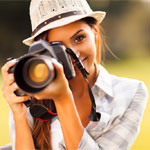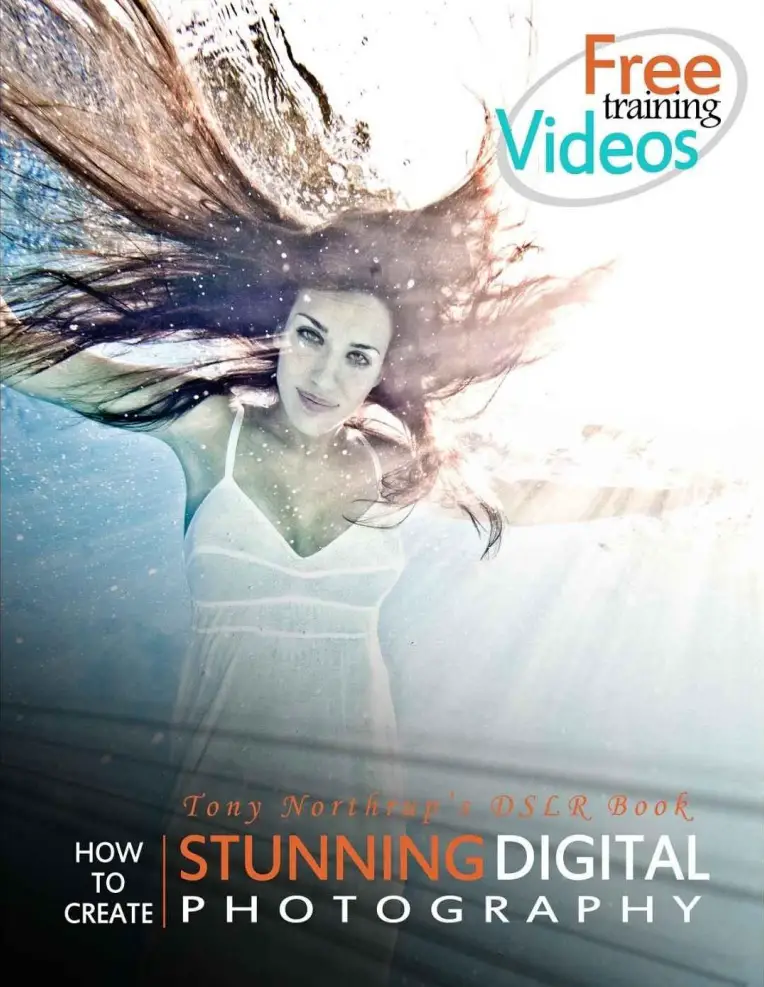
Getting started in the fashion photography industry is possible if you are dedicated and ready to focus on finding your unique style. Here are a few tips to help you build a portfolio, find work as a freelancer, and achieve your dreams.
A career in fashion photography could be a great career option if you are the creative type. This is a rewarding field where you will get to explore your passion for fashion and photography. Getting started in this field can be difficult. Here are a few tips to help you.
Find Your Style
What makes you unique as a photographer? Becoming a good photographer is something you can achieve through a process of self-discovery and personal development.
You need to experiment to find your style. It will be easier to stand out as a professional photographer if you have a unique creative voice.
Your style will keep evolving throughout your career. However, you can’t expect to find work in the fashion industry if your creative journey hasn’t begun yet. Create, explore different techniques, challenge yourself, and have fun doing it.
We also recommend that you start a collection of fashion photographs that stand out to you. You can collect these images on social media or save pages from magazines. Look at these photographs regularly and ask yourself what makes them great. Recreating some of these images could be an interesting way to challenge yourself!
Learn How To Pose Models
Learning how to pose your models is crucial if you want to build a portfolio that stands out. This skill will also help you find freelance work.
The pose your model adopts can convey an emotion. The pose should be relevant for the clothes you want to showcase, the techniques you want to use for the photograph, and the atmosphere you want to create.
Think of your model’s pose as a way to create lines that will guide the eye as one looks at the photograph. You can use the arms and shoulders of the model to frame the photograph.
Take the clothes, hair, and makeup of the model into consideration when exploring poses. A good pose should draw attention to these elements since the purpose of a fashion photograph is to showcase a look.
Think of your composition as being in three dimensions. You can add depth to your image by playing with how your model positions their torso, chin, or jawline.
If you have some experience with portraits, you might be tempted to ask your model to look directly at the camera. This is a common practice in portraits, but this isn’t something you will often find in fashion photography.
The expression of your model is another important element of your composition and can influence how one feels when looking at the photograph. Aim to capture different expressions during your photo-shoots.
Don’t be afraid of movements! You can make a photograph a lot more dynamic and interesting by capturing your model in motion. You can also explore different settings and look for unique ways of having your model interact with their environment.
Communicate with your models. A professional model will instinctively adopt interesting poses and expressions, but you will need to guide amateur models through your photo-shoots.
Get to know your models and explain what you want to create before the photo-shoot starts.
Invest In The Right Equipment
You need to invest in a high-quality camera if you want to take fashion photographs. A full-frame camera is ideal to achieve the level of detail that is typically found in fashion magazines.
Consider investing in a 35mm lens. This type of lens is suitable for working in a studio environment and for taking close-up shots. A more performing lens will be more expensive but will help you achieve a soft background effect.
You will also need to invest in quality lighting. Small, portable lighting is more affordable and suitable if you don’t have a studio. You can get started with a reflector if you plan on taking photographs outside.
You should invest in a home studio or portable studio if you want to start looking for freelance work.
Editing software is another expense you should consider. Editing your photographs with help you achieve a more professional look.
You can get started with inexpensive equipment. A quality Smartphone camera can be enough to take your first photographs.
Building Your Portfolio
The purpose of your portfolio is to showcase your best work. Creating an online portfolio will help you find your first gigs.
You can create a personal website or use social media to share your work. Social media can be a powerful tool to be seen and let people know about the services you offer. A strong following on social media can be a factor that will influence fashion editors.
Your portfolio should show your style and reflect the full range of your skills you have developed. Update it frequently, and make sure you use high-definition images. Don’t hesitate to add a watermark to your photographs before sharing them online.
A printed version of your portfolio can come in handy. Invest in high-quality prints and present your work in a nice binder.
If your work has been published in a magazine, make sure these pieces are featured in your portfolio along with the name of the publication.
Select photographs carefully and think about how you should organize them. A good portfolio should tell a story while reflecting your style.
Don’t hesitate to make a few changes to your portfolio in function of who you are presenting it to. If you are meeting with a potential client for a freelance gig or with the editor of a fashion magazine, choose the photographs that reflect what they are looking for.
Studying Photography
There are different options available if you want to study photography. You can get a bachelor’s degree in photography, take a few college classes in this field, or take an online class.
You can become a fashion photographer without a formal education in this field. However, a degree or a class can help you progress towards finding your style. You will learn a lot from a technical point of view.
Being mentored by an instructor will be beneficial. You will receive constructive feedback on your work and progress at a faster pace than you would by practicing alone. The photographs you take for a class can also be a great way to get started on building your portfolio.
Collaborations
You can learn a lot from other photographers. Connect with them on social media and look for local groups you can join.
Other photographers can help you find work, give you feedback on your work, and share useful tips when it comes to investing in equipment. Ask a successful fashion photographer if you watch them work so you can learn about the techniques they use.
You should also look into collaborating with models, fashion designers, and small business owners. This is a great way to find gigs and develop your contacts in the fashion industry.
Some models have a huge following on social media. Working with them means you will get some exposure if they share your work on their pages.
Look for talented hair and makeup artists in your area. These professionals will also need exposure and might be interested in working with you on a project. It will be easier to find great freelance gigs if you know all the best hair and makeup artists and can hire them for a photo-shoot.
You could also collaborate with editors. Learning how to edit your images yourself is ideal, but don’t hesitate to hire professional editors for your important projects.
Freelancing
Freelancing allows you to turn your hobby into paid work. It will help you build some connections and you will get a chance to create more material for your portfolio.
Freelancing will help you gain experience when it comes to communicating with a client and figuring out what they want to achieve with a photo-shoot.
Showing the work you have done for a client will help you find work with fashion magazines and major fashion brands. You will be expected to quickly grasp the tone and look they want to achieve and make it come to life in your photographs. This will be easier to do if you have worked as a freelancer in the past.
There are many opportunities to explore if you want to find freelance work. You could help a small fashion brand develop their online presence, work for aspiring models who want to create a portfolio or take photographs at charity fashion shows.
Don’t hesitate to look for gigs that aren’t outside of the world of fashion photography. You could take photographs at weddings, or set up a small portrait studio. These gigs will help you invest in professional equipment and you will gain more experience.
Don’t give up if you don’t achieve your dream of seeing your work published in a fashion magazine right away. Developing your style as a fashion photographer and finding work requires time and dedication. Focus on doing what you love, look into finding freelance gigs to get started, and learn as much as possible from other photographers.
Share:






